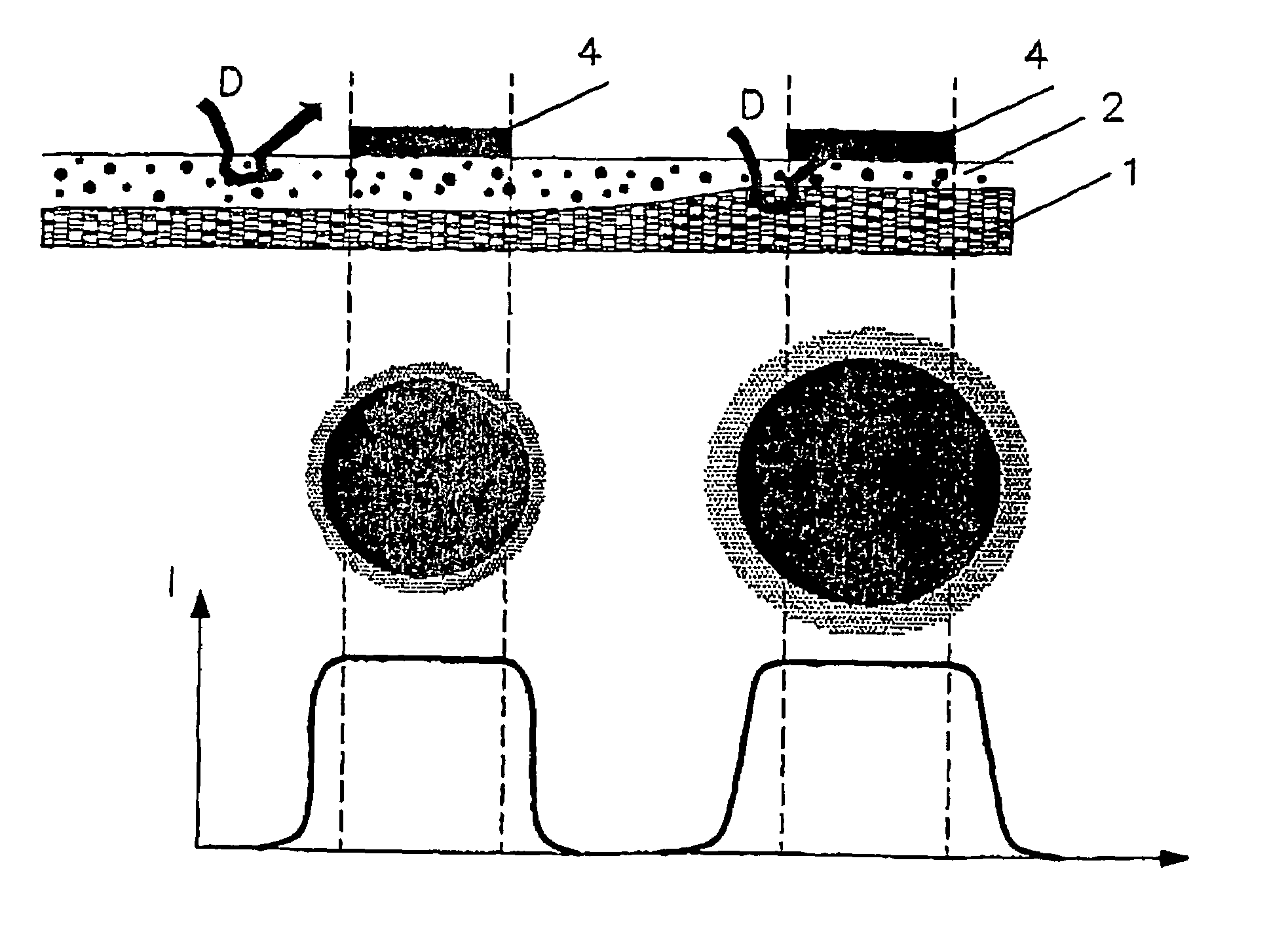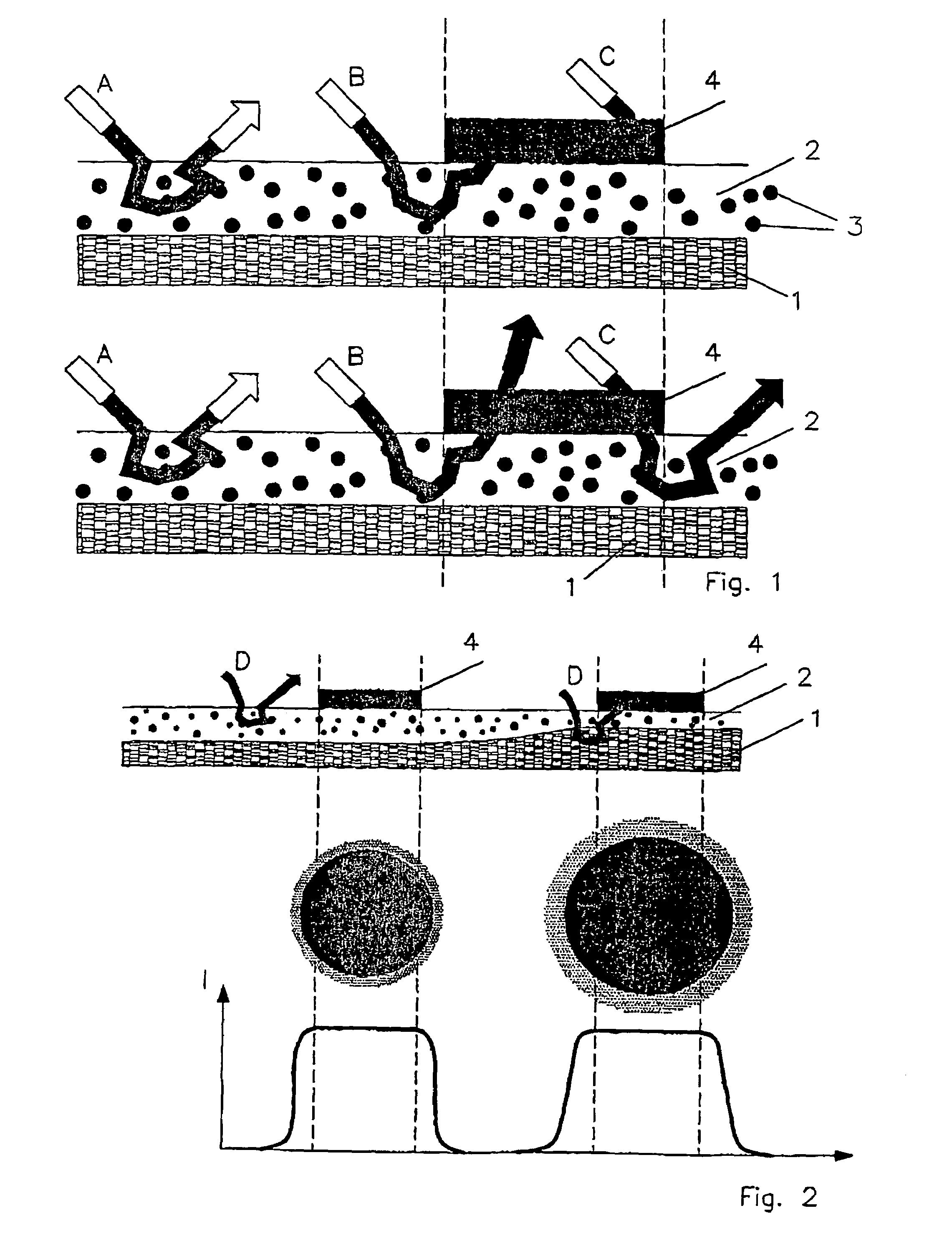Method for determining the paper quality for halftone printing
a paper quality and autotypical technology, applied in the direction of material analysis, optically investigating flaws/contamination, instruments, etc., to achieve the effect of accurate and sensitive method, significant improvement of paper quality, and improved detection of paper faults
- Summary
- Abstract
- Description
- Claims
- Application Information
AI Technical Summary
Benefits of technology
Problems solved by technology
Method used
Image
Examples
Embodiment Construction
[0030]As FIG. 1 shows, a partly translucent coating 2 which, for example, has pigments 3 is applied to a paper substrate 1 composed of fibers. Light beams A, B and C are scattered differently. In this case, the upper part of FIG. 1 shows a black opaquely printed dot 4, while in the lower part this printed dot 4 is partly transparent to light, like cyan inks, for example. The light beam A is scattered out of the coating 2 in both cases and therefore contributes to the lightness of the image at this point. In the upper illustration with a black printed dot, the light beam B is scattered under this printed dot 4 and therefore cannot leave the coating 2 again. A somewhat blurred, dark region will therefore occur around the printed dot 4, that is to say the dot 4 will appear to be larger than it actually is. It is thereby not only light beams C which fall directly onto the printed dot 4 which are extinguished but also light beams which enter the coating 2 close to the dot 4.
[0031]In the ...
PUM
| Property | Measurement | Unit |
|---|---|---|
| transparent | aaaaa | aaaaa |
| pressure | aaaaa | aaaaa |
| area | aaaaa | aaaaa |
Abstract
Description
Claims
Application Information
 Login to View More
Login to View More - R&D
- Intellectual Property
- Life Sciences
- Materials
- Tech Scout
- Unparalleled Data Quality
- Higher Quality Content
- 60% Fewer Hallucinations
Browse by: Latest US Patents, China's latest patents, Technical Efficacy Thesaurus, Application Domain, Technology Topic, Popular Technical Reports.
© 2025 PatSnap. All rights reserved.Legal|Privacy policy|Modern Slavery Act Transparency Statement|Sitemap|About US| Contact US: help@patsnap.com



